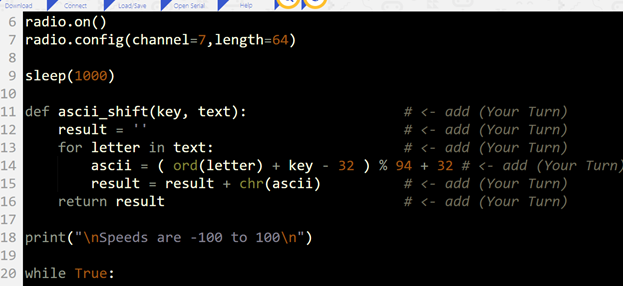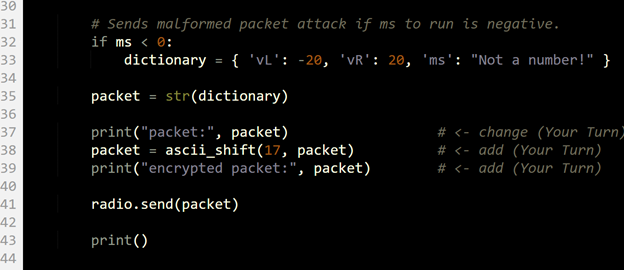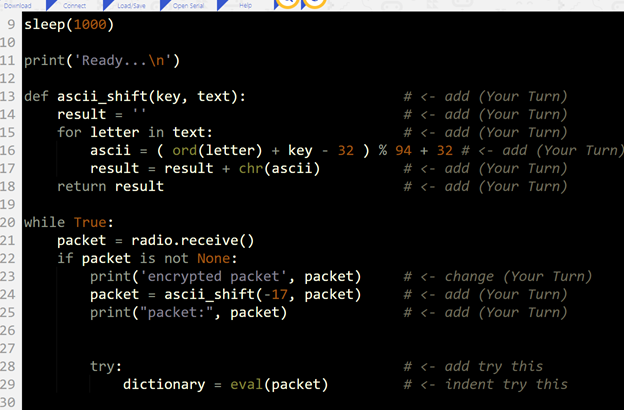Did You Know: Again, Stronger Together
As mentioned earlier, devices on a network need both encryption AND protection from malformed packets. This does not normally take many lines of code. Like the earlier example, both Sender and Receiver scripts need the encrypt/decrypt function (ascii_shift in our example).
def ascii_shift(key, text):
result = ''
for letter in text:
ascii = ( ord(letter) + key - 32 ) % 94 + 32
result = result + chr(ascii)
return result
The Sender script also needs to encrypt the packet before sending:
packet = ascii_shift(17, packet)
…and the Receiver needs to decrypt the packet after receiving:
packet = ascii_shift(-17, packet)
In Python for computers (as opposed to MicroPython for the micro:bit), an encryption/decryption module would be imported. Instead of adding a comparatively weak encryption function, you’d import a module like PyCryptodome, Cryptography, or PyNaCl and use its stronger cryptography methods to encrypt and decrypt.
Your Turn: Add Encryption
The last task in hardening the keyboard-controlled cyber:bot is to implement both encryption and exception handling.
- Modify the sender and receiver scripts using the comments tagged (Your Turn) in the images below as a guide.
- Name and save your modified sender and receiver scripts.
- Repeat the tests yet again, this time to verify that the application still works and is still immune to malformed packets.
- Examine the transmitter and receiver micro:bit serial monitors, and verify that the encryption and decryption are happening as planned.
Sender Script Modifications


Receiver Script Modifications

